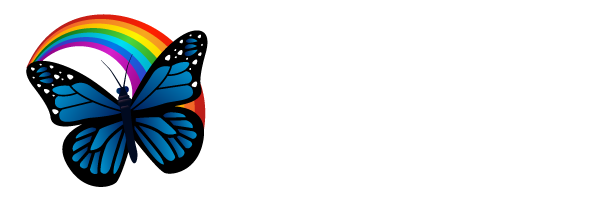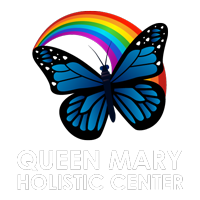Temporomandibular Joint Disorder (TMJD, TMJ or TMD), or TMJ syndrome, is a problem in the jaw and surrounding areas of the head and neck that causes pain, discomfort, and disability in millions of people each year. Many people suffer needlessly as they search in vain for relief from their pains. With the application of new technology and acquisition of proper training, dentists are able to diagnose and treat TMJ disorder. With all of this new information emerging, dentists will now be able to understand TMJ disorder and can become more productive in their treatment and prevention of it. Today, the medical profession is becoming more cognizant that dentistry plays a vital role in this process and more often seeks the expertise of dentists knowledgeable in this new field of treatment.

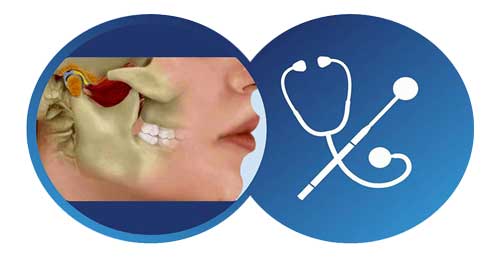
“Bad bite” (Malocclusion) and the Temporomandibular Joint
Your jaw joint, which holds your lower jaw in place, is suspended beneath your skull by an intricate system of muscles and tendons. The jaw joints, also known as the temporomandibular joints (TMJ), are some of the most complex in the body. The jaw joint, surrounding muscles, and the fit of your teeth are closely interrelated, each affecting the other as you make everyday jaw movements such as speaking and chewing.


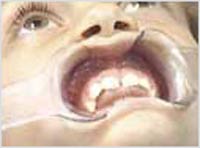
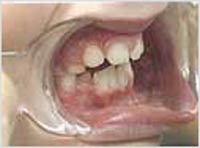
When malocclusion exists, even what looks like a good bite could be at the expense of putting pressure on other jaw joint areas as the jaw shifts to accommodate the teeth. Symptoms of misaligned teeth may be clenching, grinding, premature tooth wear, stress on the muscles and tendons, some of which may occur during sleep. Results of these symptoms are headaches and muscular aches and pains in the face, neck, shoulders and back, dizziness, earaches, ringing in the ears and many other problems.
In addition to these common conditions which often (but not always) relate to malocclusion and cause pain in and around the temporomandibular joint, there are other conditions which can affect the function and comfort of this joint and the total body health. These conditions include disease, nutritional deficiencies (e.g. gout, tumors, trauma and infections).
Before prescribing the proper treatment for your particular problem, a variety of diagnostic procedures may be necessary. A radiograph (x-ray) may be taken of your jaw joint. This provides a clear picture of your own particular TMJ anatomy and position of the various structures within the jaw joint.
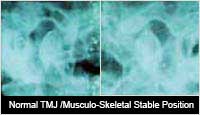
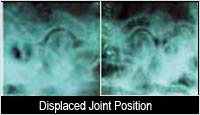
Treatment and Modalities
After diagnosing the problem, a variety of treatments may be recommended. initial phases of treatment are aimed to eliminate the TMJ pain the symptoms resulting from the actual problem. In the second stage, the actual treatment to correct the problem is implemented. Various TMJ treatments are explained briefly below.
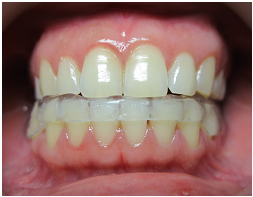
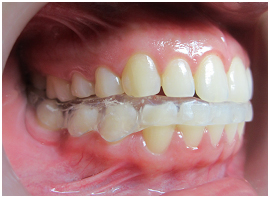

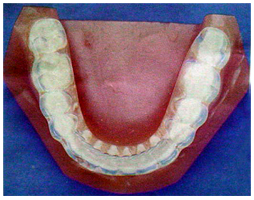
(Picture 1 & 2) J-5 Myomonitor TENS Unit – For muscle relaxation and
for establishing physiologic occlusion (Picture 3) No needle acupuncture
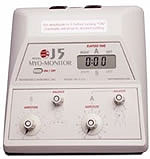
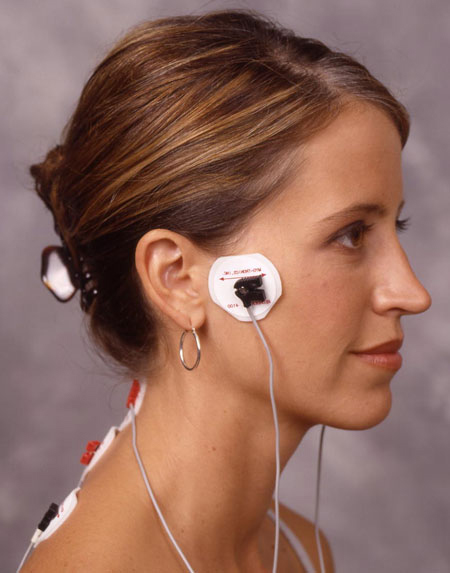
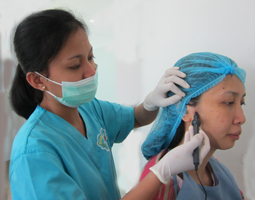
Premature contacts, detected by the proprioceptive system and relayed through the central nervous system may not be tolerated, if the patient’s resistance to this interference is not adequate. In this case, pathology will occur. Treatment of this condition may require selective grinding to achieve occlusal stability.

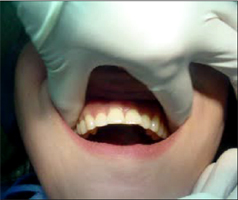
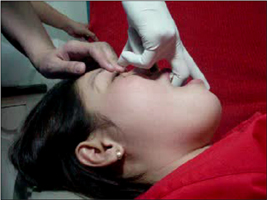
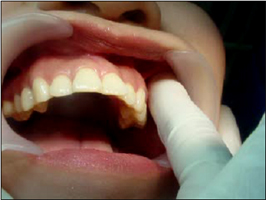
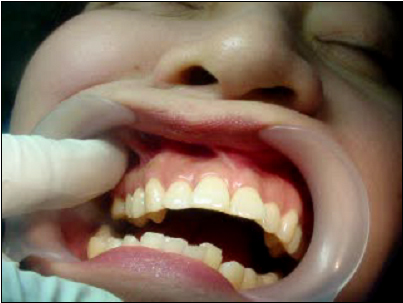
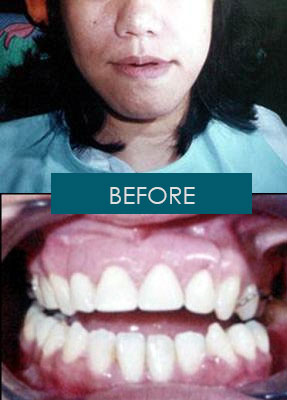
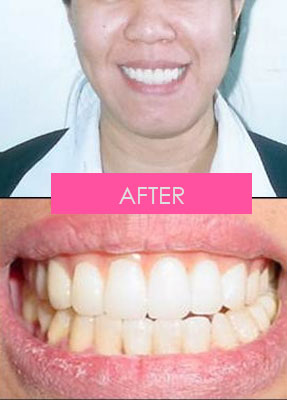

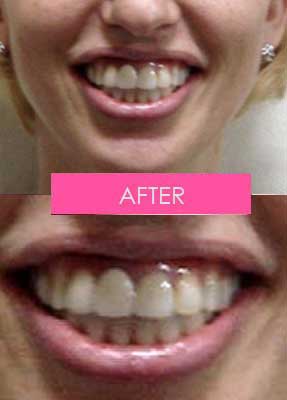
Signs & Symptoms
Self Evaluation Test – Check yourself if you are suffering from anyone of these signs & symptoms:
- Dizziness
- Facial pain
- Throat problem
- Migraines
- Hypersensitivity (non carious teeth)
- Pain down the arms radiating to the fingers
- Headaches
- Eye problems
- Insomnia
- Depression
- Limited jaw opening/Pain upon jaw movement
- Chronic neck, shoulder & backache (upper & lower)
- Muscle pain
- Grinding/clenching of the teeth
- Ringing in the ears
- Forgetfulness
- Post nasal drip
- Uncontrollable facial twitching
Actual Patient Case
Patient #3 – Female , 37 yrs. old
Complaints: Deep bite, jaw popping – clicking, headaches, pain in cheek muscles.
Management: TMJ therapy, orthodontics – braces

Patient #8 – Female, 37 yrs. old
Complaints: Open bite (front teeth), deviated lower jaw (facial asymmetry).
Management: Full mouth reconstruction, balancing facial asymmetry, enhancing flat upper lift support by bone augmentation on the pre-maxilla, porcelain packet bridge crowns, gum pad placement to balance facial asymmetry.
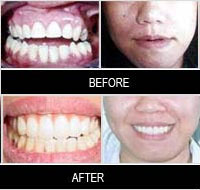
Patient #8 – Female, 37 yrs. old
Complaints: Open bite (front teeth), deviated lower jaw (facial asymmetry).
Management: Full mouth reconstruction, balancing facial asymmetry, enhancing flat upper lift support by bone augmentation on the pre-maxilla, porcelain packet bridge crowns, gum pad placement to balance facial asymmetry.

Patient #5 – Male, 46 yrs. old
Complaints: Cross-bite, deviated jaw, flat upper lip.
Management: TMJ therapy, cross-bite correction, porcelain without metal, implant placement, bone augmentation on upper pre-maxilla to enhance upper lip support.

Patient #10 – Female, 21 yrs. old
Complaints: Deviated lower jaw, bad bite
Management: TMJ management, placement of orthotic appliance.

Testimonials
Alignment of body, mind, and spirit is the gift of Holistic Dentistry for me. I was born during the Japanese – American war and I didn’t realize that I suppressed so much anger, resentment and desire for revenge in my mouth-and in my mind. The biological extractions of my dead teeth, the removal of metal fillings, the TMJ treatment I went through, all integrated to help my emotional healing.
Holistic Dentistry slowly opened my mouth and my mind to change the physical, mental, and emotional patterns in me that created these negative conditions that are now enabling me to accept nourishing changes in my life.
I believe healing is a released from the past and Holistic Dentistry is helping to liberate me. Thanks.
Interested to know more about the service?
Schedule a visit now!

